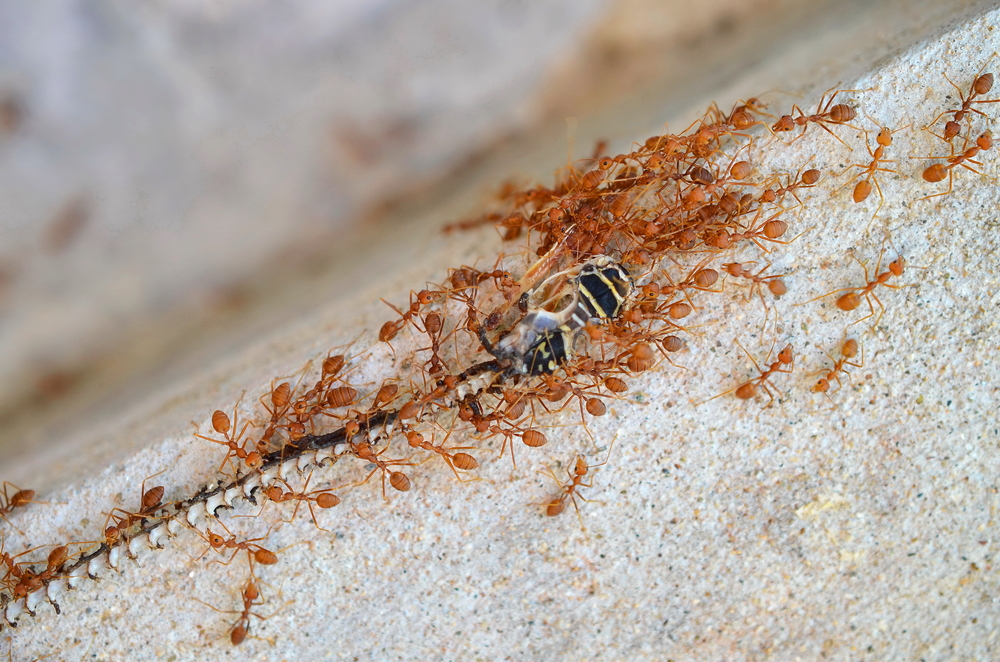
Apparently in the ant world it’s a few brains and a lot of braun, according to new research that can teach us about the power of crowdsourcing talent to get a job done.
Anyone who has ever watched a group of ants scurrying to carry a large crumb back to their nest has probably wondered how these tiny creatures manage the task.
New research at the Weizmann Institute of Science, explains how a balance of individual direction and conformist behavior enables ants to work together to move their food to in the desired direction.
To lug a large object, a number of ants surround it – the back ones lift, those on the leading edge pull. How do they stay on track, instead of simply pulling all around in a sort of tug-of-war?
Ofer Feinerman and his group in the Institute’s Physics of Complex Systems Department used video analysis to track the individual movements of ants in a group that was carrying a large food item toward their nest.
The more ants around the item (for, example, a breakfast cereal nugget) the faster they could move it. Although the bit of food always travelled in the general direction of the nest, its path was one of wrong turns and corrections.
In the videos, individual ants can be seen to help in carrying for a short while, after which new ants take their places. When these new ants mobilize, the other carriers, which have since become a bit confused as to the proper direction, defer to the newcomers.
As a new ant attaches, the steering of the object temporarily corrects, so that the trajectory becomes better aimed toward the nest. Newly attached ants continue to lead the motion for about 10-20 seconds. Thus informed ants take the lead, but they are also quick to relinquish it once their informational edge disappears.
Together with the group of Prof. Nir Gov of the Weizmann Institute’s Chemical Physics Department, a mathematical model was developed to describe this cooperative behavior. According to the model, the decisions of the “non-informed” carriers fit an intermediate level of behavioural conformism; the well informed individuals are then set to optimally steer the direction of the load.
This model describes a critical point between conformism and individuality that enables the group of ants to coordinate their work and adjust their direction as needed. The model is a variation on a so-called Ising model, which is more often used to describe emergent phenomena in statistical physics.
What can this study teach us about the role of individuality within a group of social animals? Feinerman: “In this system, the wisdom does not come from crowds. Rather, some individuals supply the ‘brains,’ and the role of the group is to amplify the ‘muscle’ power of savvy individuals so that they can actually move the load.”
Ants carrying food from Shutterstock

Savvy individual humans are resolutely disregarded in favor of whoever and whatever can lead to the most profit, regardless of environmental consequences. It’s an instinct to grow that ignores common sense, the result of which are the flash floods, drought and wildfires now spreading around the World.